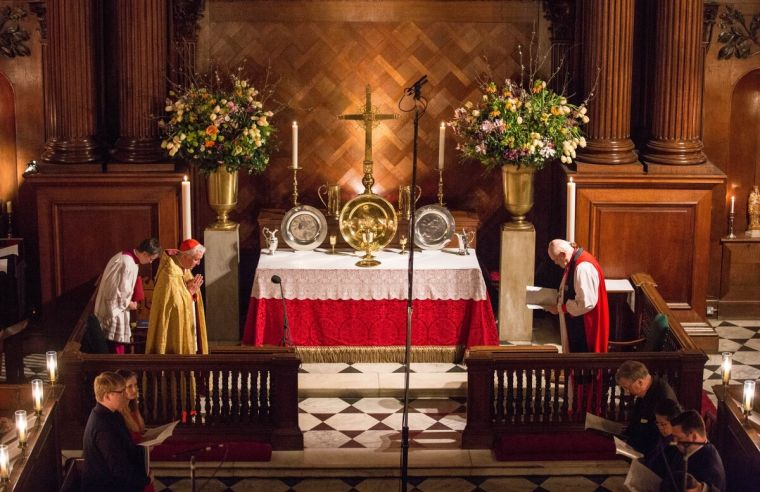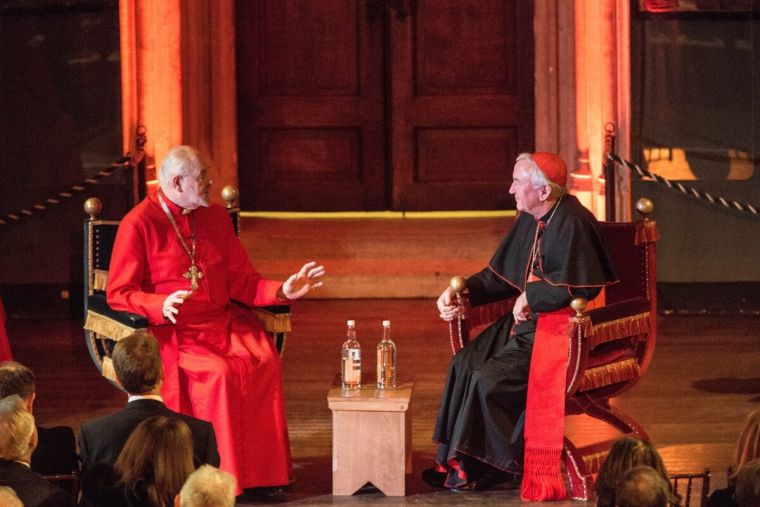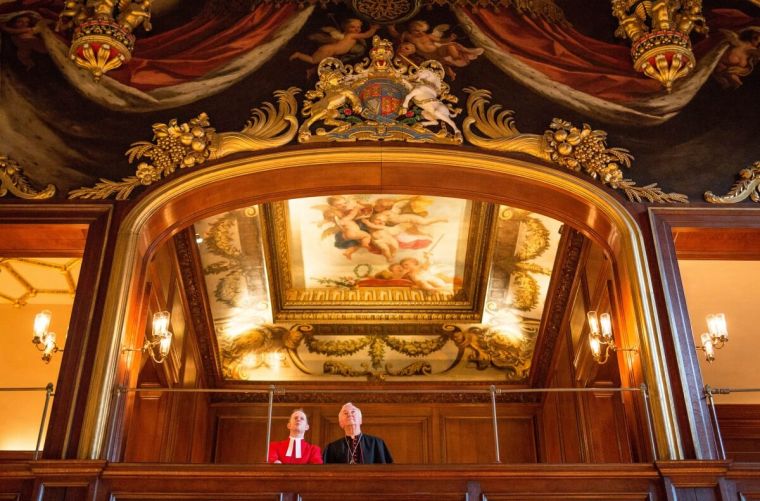First Catholic service in centuries takes place at Henry VIII's Hampton Court Palace

With clouds of incense and exquisite choral music, the first Roman Catholic service for more than 450 years was last night celebrated in the Chapel Royal at Hampton Court Palace.
The Chapel Royal lies at the heart of the Tudor residence of King Henry XVIII who was responsible for the Church in England's breach with Rome.
Every one of the chapel's 300 seats in the wooden stalls and boxed pews was taken for the service, which was mostly in Latin.

The Genesis Foundation and the Choral Foundation jointly organised the historic Vespers, the first Latin Rite of the Catholic Church to be celebrated at the Chapel Royal since the 1550s.
As a "Royal Peculiar", the Chapel Royal at Hampton Court Palace falls under the personal jurisdiction of the Queen.
Hampton Court Palace was built by Cardinal Thomas Wolsey on the site of the chapel of the Knights of St John Hospitaller. The Vespers service was dedicated to St John the Baptist in recognition of its origins. In the early 16th century the chapel was taken from Wolsey by the King and rebuilt, to include on his orders one of its most striking features, the blue and gold carved and star-studded ceiling.
Harry Christophers and his ensembles, The Sixteen and Genesis Sixteen, performed some of the oldest and most beautiful choral music in the song book, including Thomas Tallis' Magnificat, William Cornysh's Salve Regina and John Taverner's "Leroy" Kyrie.

Before the service, Archbishop of Westminster Cardinal Vincent Nichols and Bishop of London Richard Chartres took part in a public "conversation" on "Faith and the Crown" in the Great Hall at Hampton Court, debating the relationship between the Church and state and the role of Christianity in society.
Bishop Chartres told Archbishop Nichols: "Welcome home, Cardinal."
Cardinal Nichols described Catholics as a "significant minority". Bishop Chartres said: "Of course, we're all minorities now."
They also spoke about conflicts in Europe of the 16th and 17th centuries, secularisation and contemporary religious violence.
Bishop Chartres, who is among the most erudite of the English bishops and who is particularly expert on Orthodox Christianity, said Christian unity would come through the Churches finding common cause as they "look together" at the problems facing humanity rather than focusing on their differences.

Henry VIII broke with Rome after Wolsey failed to secure his annulment from Catherine of Aragon. Henry's third wife Jane Seymour gave birth to his only son Prince Edward at Hampton Court. His fifth wife Catherine Howard is said to haunt the palace, where she had faced accusations of adultery. The King married his sixth and last wife, Catherine Parr, at Hampton Court. The last Catholic service took place at Hampton Court during the reign of Henry VIII's daughter, Queen Mary I.
Michele Price, of the Choral Foundation, said: "The Chapel Royal at Hampton Court played centre stage to the religious changes in the 16th Century. Its musicians and composers met the challenge of serving the spiritual needs of Henry VIII, Edward VI, Mary I and Elizabeth I, by producing new and beautiful music and in so doing became "the cradle of English church music. This historic occasion enabled us to explore our rich heritage and bring together Christian traditions as we celebrate 500 years of Hampton Court Palace."
John Studzinski, founder and chairman of the Genesis Foundation, said: "We need to recognise that we have more in common than not. I'm therefore delighted that the Genesis Foundation is enabling the Catholic and Anglican churches to engage in dialogue on this site that is so rich in history, both theological and musical. It will be an unforgettable occasion and is genuinely one for the history books."
Signs that division is still a reality however were visible before the service, when ten people from the Protestant Truth Society protested with placards outside the Palace, which is on one of the most beautiful stretches of the Thames just outside London.











